Climate, Conflict, Collapse: How Drought Destabilized The Last Major Precolonial Mayan City
AncientPages.com - The city of Mayapán was the largest Mayan city from approximately 1200 to 1450 AD. It was an important political, economic and religious center, and the capital of a large state that controlled much of northwestern Yucatan in present day Mexico.
When the Spanish arrived in the early 1500s, Mayapán was fondly remembered and Mayans proudly claimed descent from its former citizens. But inherent instability meant that it was doomed to fail.
Archaeologists have been investigating the site of Mayapán since the 1950s. Credit: Bradley Russell, Author provided
Or so the story went. This narrative has influenced views of this important city, and this period of Mayan civilization more broadly, for some time.
In a new study, my collaborators and I show that warfare, collapse and abandonment at Mayapán were not inevitable. Instead, they were exacerbated by drought.
Traces of a massacre
Experts from a wide range of fields worked together to piece together this story. The team included included archaeologists, biological anthropologists, geologists and paleoclimatologists.
Archaeologists led by Carlos Peraza Lope of the Instituto Nacional de Antropología e Historia of Mexico and Marilyn Masson of the University at Albany—State University of New York have been investigating the ruins of Mayapán intensively since 1996 and 1999, respectively. Intermittent work has been going on at the site since the 1950s.
Researchers have long suspected that Mayapán collapsed violently, based on early colonial documents. These records describe a revolt led by the noble Xiu family that resulted in the massacre of the ruling Cocom family.
When archaeologists from the Carnegie Institute of Washington started to investigate the site in the 1950s, they were not surprised to find buried bodies that had not been given the usual respectful funerary treatment.
Desecration and destruction
I am a bioarchaeologist, which means my job was to look for evidence of trauma in the skeletons that may have contributed to the deaths of these individuals. This evidence would support the idea of a violent collapse of the city.
Most burials lacked evidence of violence. However, some exhibited injuries such as an embedded arrowheads, stabbing wounds or blunt force trauma to the skull.
Credit: Bradley Russell, Author provided
The signs of violence were concentrated in important contexts at the site and found in association with evidence of desecration and deliberate destruction. It seems some of the site's own elite inhabitants had been the targets of violence.
Rising violence
To find out when this conflict occurred, and how it related to changes in climate, required a large number of high-precision radiocarbon dates and paleoclimate data from the vicinity of Mayapán.
These analyses were carried out in the labs of Douglas Kennett of the University of California, Santa Barbara, David Hodell at the University of Cambridge, and colleagues.
As a result, we now have more radiocarbon dating information for Mayapán than for any other Mayan site.
Paleoclimate data, meanwhile, was obtained from a stalagmite recovered from a cave directly beneath the site's principal temple pyramid, which was dedicated to the feathered serpent deity Kukulkan.
These analyses revealed that episodes of violence became more common later in the site's history, corresponding with evidence of drought that began in the late 1300s and continued into the 1400s.
One mass grave in particular, recovered in Mayapán's most sacred precinct at the foot of the temple of Kukulkan, appeared to date to around the time of the city's purported collapse in the mid-1400s. Remarkably, this was confirmed through radiocarbon analyses, corroborating historical accounts of the site's violent overthrow at this time.
Drought and decline
But the story does not end there.
Radiocarbon dating also provided the surprising result that Mayapán's population started falling after approximately 1350 AD. Indeed, the city was already largely abandoned by the time of its famous collapse in the mid 1400s.
It may be that as drought continued through the late 1300s, the residents of Mayapán started voting with their feet.
After Mayapán's fall, the city's former inhabitants returned to their ancestral homelands in different parts of the Yucatan Peninsula. By the time of Spanish contact in the early 1500s, the peninsula was divided into a number of independent provinces, some of which were thriving.
Climate migration
Although from a vastly different time and place, our study contributes to current efforts to combat global climate change.
When environmental conditions were favorable, populations expanded. But when conditions deteriorated, this put pressure on social and political institutions.
Mayapán's people migrated away from the city to cope with the change in climate. While migration may be less of a solution in the face of today's climate change, due to global population levels, climate refugees are expected to rapidly grow in number without significant action by governments and citizenry alike.
Big questions, big collaboration
To address big questions such as this requires a level of multidisciplinary collaboration that is difficult to achieve but essential.
Importantly, local Yucatecan Mayan communities have been integral to this process. Inhabitants of the equally ancient town of Telchaquillo, located just outside Mayapán, have contributed to this work in innumerable ways, including excavation, artifact cleaning, processing and analysis.
This article is republished from The Conversation under a Creative Commons license. Read the original article.![]()
More From Ancient Pages
-
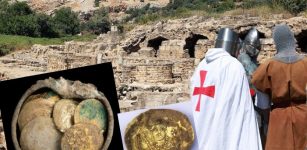 Treasure Hoard Of Rare Gold Coins From The Crusader Conquest Discovered In Caesarea, Israel
Archaeology | Dec 8, 2020
Treasure Hoard Of Rare Gold Coins From The Crusader Conquest Discovered In Caesarea, Israel
Archaeology | Dec 8, 2020 -
 Mysterious Skeletons Of A Tall Unknown Race Discovered In California – Who Were These Beings?
Featured Stories | Apr 10, 2024
Mysterious Skeletons Of A Tall Unknown Race Discovered In California – Who Were These Beings?
Featured Stories | Apr 10, 2024 -
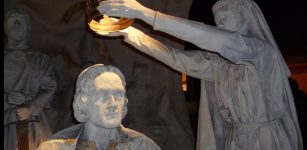 On This Day In History: First War Of Scottish Independence: Battle of Bannockburn Begins – On June 23, 1314
News | Jun 23, 2016
On This Day In History: First War Of Scottish Independence: Battle of Bannockburn Begins – On June 23, 1314
News | Jun 23, 2016 -
 Men Are Slowly Losing Their Y Chromosome – Is The Future Of Humanity In Danger?
Featured Stories | Nov 7, 2023
Men Are Slowly Losing Their Y Chromosome – Is The Future Of Humanity In Danger?
Featured Stories | Nov 7, 2023 -
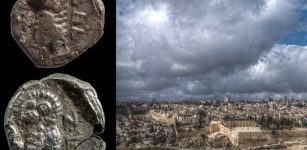 Extremely Rare And Tiny Biblical Coins Discovered Near The Temple Mount
Archaeology | May 30, 2018
Extremely Rare And Tiny Biblical Coins Discovered Near The Temple Mount
Archaeology | May 30, 2018 -
 Study Reveals Average Age That Women And Men Had Children Over Past 250,000 Years
DNA | Jan 10, 2023
Study Reveals Average Age That Women And Men Had Children Over Past 250,000 Years
DNA | Jan 10, 2023 -
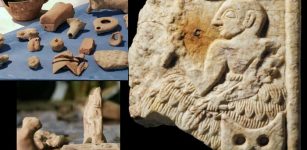 Hundreds Of Thousands Of Sumerian Artifacts Have Been Stolen From Iraq’s Museums And Archaeological Sites
Artifacts | Dec 7, 2020
Hundreds Of Thousands Of Sumerian Artifacts Have Been Stolen From Iraq’s Museums And Archaeological Sites
Artifacts | Dec 7, 2020 -
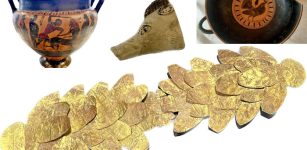 15 Precious Ancient Objects Returned To Greece From Switzerland – Antique Dealer Charged With Trafficking
Artifacts | Feb 3, 2023
15 Precious Ancient Objects Returned To Greece From Switzerland – Antique Dealer Charged With Trafficking
Artifacts | Feb 3, 2023 -
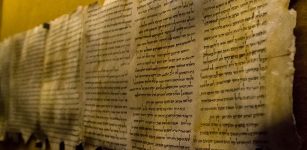 30 Ancient Skeletons May Finally Unravel The Secrets Of The Dead Sea Scrolls
Archaeology | Nov 23, 2017
30 Ancient Skeletons May Finally Unravel The Secrets Of The Dead Sea Scrolls
Archaeology | Nov 23, 2017 -
 Enigma Of The Missing Pyramid Bodies – Ancient Egyptian Mystery Remains Unsolved
Ancient Mysteries | Dec 10, 2018
Enigma Of The Missing Pyramid Bodies – Ancient Egyptian Mystery Remains Unsolved
Ancient Mysteries | Dec 10, 2018 -
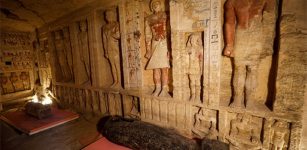 Collection Of 59 Well-Preserved 26th Dynasty Coffins Unearthed In Saqqara Necropolis, Egypt
Archaeology | Oct 4, 2020
Collection Of 59 Well-Preserved 26th Dynasty Coffins Unearthed In Saqqara Necropolis, Egypt
Archaeology | Oct 4, 2020 -
 Mysterious Ancient Shapeshifters Who Guided Humans And The Battle Of The Gods Described In Sacred Texts And Myths
Ancient Mysteries | Oct 27, 2021
Mysterious Ancient Shapeshifters Who Guided Humans And The Battle Of The Gods Described In Sacred Texts And Myths
Ancient Mysteries | Oct 27, 2021 -
 Strange Radiation Case – Medical Files Secretly Erased?
Featured Stories | Sep 13, 2019
Strange Radiation Case – Medical Files Secretly Erased?
Featured Stories | Sep 13, 2019 -
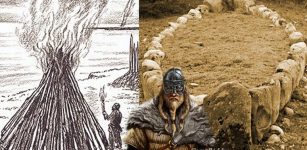 Ship-Shaped Burial Of Tjelvar – Legendary First Man Who Brought Fire To Gotland
Featured Stories | Feb 25, 2021
Ship-Shaped Burial Of Tjelvar – Legendary First Man Who Brought Fire To Gotland
Featured Stories | Feb 25, 2021 -
 Archaeologists unearthed artifacts in a 3,700 year-old mine factory
Artifacts | Aug 22, 2015
Archaeologists unearthed artifacts in a 3,700 year-old mine factory
Artifacts | Aug 22, 2015 -
 Dancing Around The Throne: Networking In The Time Of King William I
Ancient Traditions And Customs | Jul 4, 2023
Dancing Around The Throne: Networking In The Time Of King William I
Ancient Traditions And Customs | Jul 4, 2023 -
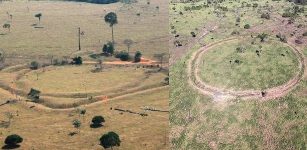 Discovery Of Fortified Villages And Earthworks Re-Writes Ancient History Of Amazon
Archaeology | Mar 29, 2018
Discovery Of Fortified Villages And Earthworks Re-Writes Ancient History Of Amazon
Archaeology | Mar 29, 2018 -
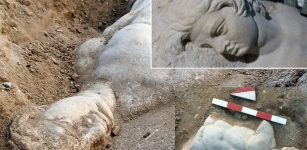 1,800-Year-Old Relief Of Mythological Satyr Figure Under Restoration
Artifacts | Sep 5, 2020
1,800-Year-Old Relief Of Mythological Satyr Figure Under Restoration
Artifacts | Sep 5, 2020 -
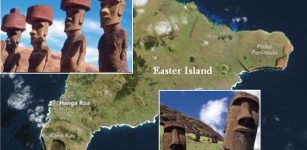 Easter Island’s Society Was Sophisticated And Its People Shared Information And Collaborated
Archaeology | Aug 14, 2018
Easter Island’s Society Was Sophisticated And Its People Shared Information And Collaborated
Archaeology | Aug 14, 2018 -
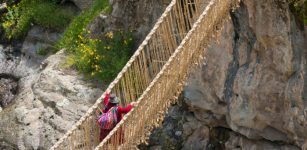 Keshwa Chaca – Last Suspension Rope Bridge Of Inca People
Ancient Traditions And Customs | Apr 17, 2019
Keshwa Chaca – Last Suspension Rope Bridge Of Inca People
Ancient Traditions And Customs | Apr 17, 2019



